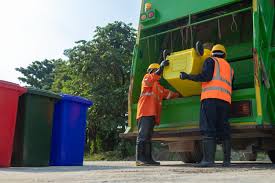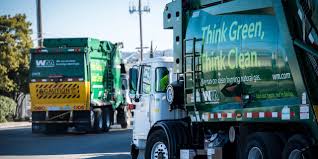Environmental management best practices involve responsible and sustainable actions to protect and conserve the environment. This includes reducing waste, using resources efficiently, promoting recycling, and adopting eco-friendly technologies.
It also entails minimizing pollution, preserving biodiversity, and engaging communities in environmental awareness and conservation efforts. Overall, it’s about making choices that benefit both the planet and future generations.
In our quest for a sustainable future, environmental management best practices play a crucial role. These practices are like a compass guiding us towards responsible choices that safeguard our planet. Let’s explore some key principles in simple terms:
1. Reduce, Reuse, Recycle: Embrace the trio of environmental superheroes. Minimize waste by using products wisely, find ways to reuse items, and actively participate in recycling programs. It’s like giving everyday items a second chance at making a positive impact.
2. Resource Efficiency: Treat resources like precious treasures. Use energy-efficient appliances, turn off lights when not needed, and be mindful of water consumption. Small changes in our daily habits can lead to big gains in preserving resources for the long run.
3. Green Technologies: Embrace technology with an eco-friendly twist. Support and adopt innovations that minimize environmental impact. From solar panels to electric vehicles, these advancements contribute to a cleaner and more sustainable world.
4. Pollution Prevention: Be a pollution warrior. Whether it’s air, water, or soil, take steps to prevent pollution. Proper disposal of waste, reducing harmful emissions, and avoiding the use of harmful chemicals are essential actions in the battle against environmental degradation.
5. Biodiversity Conservation: Celebrate the variety of life on Earth. Protecting and preserving biodiversity involves safeguarding ecosystems and the multitude of species that call them home. This means supporting conservation efforts and respecting the delicate balance of nature.
6. Community Engagement: Environmental responsibility is a team effort. Engage with your community to raise awareness about environmental issues. Participate in local clean-up events, workshops, and initiatives that promote a shared commitment to the well-being of our planet.
7. Compliance with Regulations: Follow the rules that protect the environment. Environmental regulations are in place for a reason – to ensure that industries, businesses, and individuals operate in a way that minimizes harm to the environment. Compliance is key to sustainable practices.
8. Continuous Improvement: Strive for progress, not perfection. Regularly evaluate and improve environmental management practices. Stay informed about new developments and technologies that can further enhance sustainability efforts.
Remember, each action, no matter how small, contributes to the larger picture of environmental conservation. By adopting these best practices in our daily lives, we pave the way for a greener and healthier planet for generations to come.
Read Also: Reducing your Environmental Impact
Waste Management Best Practices

Waste management is a crucial aspect of environmental stewardship, and employing effective strategies can significantly contribute to a cleaner and more sustainable world. Here, we explore two key facets of waste management: Reduction, Reuse, and Recycling Strategies, as well as Hazardous Waste Handling.
1. Reduction, Reuse, and Recycling Strategies
a. Reduction: The first line of defense against excessive waste is to minimize it in the first place. This involves being mindful of consumption, opting for products with minimal packaging, and embracing a lifestyle centered on less waste. For instance, carrying a reusable water bottle or using cloth bags reduces the need for disposable alternatives.
b. Reuse: Before tossing items away, consider if they can serve another purpose. Items like glass jars, for example, can be repurposed for storage, reducing the demand for new containers. Embracing the concept of “reuse” promotes resourcefulness and diminishes the throwaway culture.
c. Recycling: When reduction and reuse aren’t viable options, recycling steps in. Separating recyclables like paper, plastic, and metal ensures that these materials can be transformed into new products rather than ending up in landfills. Recycling conserves resources and lessens the environmental impact of raw material extraction.
2. Hazardous Waste Handling
a. Identification: Proper waste management begins with correctly identifying hazardous materials. This includes substances like batteries, paints, and certain cleaning agents. Awareness of what constitutes hazardous waste is fundamental to safe handling.
b. Segregation: Segregating hazardous waste from regular waste is crucial to prevent contamination and potential harm. Special containers or designated areas for hazardous materials help maintain a safe environment.
c. Safe Disposal: Hazardous waste requires special treatment during disposal. Facilities equipped to handle these materials ensure that they are neutralized or processed in a way that minimizes harm to the environment and human health. It’s essential to adhere to local regulations regarding the disposal of hazardous waste.
By integrating these waste management best practices into our daily lives, we contribute to a more sustainable and ecologically responsible future.
Through simple actions like reducing, reusing, and recycling, and handling hazardous waste with care, each person becomes a steward of the environment, collectively fostering a cleaner and healthier planet.
The Importance of Environmental Management

In the grand scheme of things, environmental management best practices aren’t just a checklist; they are the guardians of our planet’s well-being. Let’s delve into the reasons why these practices are crucial in the simplest terms;
1. Preserving Nature’s Balance: Imagine nature as a delicate dance where every species, every ecosystem has a role. Environmental management ensures we don’t disrupt this dance. By preserving the balance, we safeguard habitats, prevent extinction, and maintain the beauty of our natural world.
2. Securing Clean Air and Water: Breathing fresh air and drinking clean water are basic rights. Environmental management practices act as a shield against pollution, ensuring that the air we breathe and the water we drink remain pure and healthy for everyone.
3. Sustainable Resources for Future Generations: Think of resources as gifts we pass down to our children. Best practices ensure we use these gifts wisely, leaving enough for the generations that follow. It’s a commitment to a sustainable legacy.
4. Protecting Our Health: The environment and our well-being are intertwined. Good environmental management means less exposure to harmful pollutants, leading to better health outcomes for individuals and communities.
5. Mitigating Climate Change Impact: Climate change is real, and its effects are far-reaching. By adopting best practices, we contribute to the fight against climate change. From reducing carbon emissions to promoting renewable energy, these actions make a significant impact on our planet’s climate resilience.
6. Supporting a Thriving Economy: A healthy environment is the foundation of a strong economy. By managing resources sustainably and reducing environmental risks, we ensure the stability of industries, agriculture, and the overall economic well-being of societies.
7. Fostering Environmental Awareness: Knowledge is a catalyst for change. Environmental management practices promote awareness, educating individuals and communities about the importance of protecting our planet. Informed choices lead to a more sustainable future.
8. Global Collaboration for a Common Goal: The environment knows no borders. Environmental challenges require global solutions. By following best practices, we participate in a worldwide effort to address issues like deforestation, pollution, and biodiversity loss, creating a united front for the well-being of Earth.
Environmental management best practices are the guardians of our shared home. They ensure a harmonious coexistence between humanity and nature, providing a roadmap for a future where our planet thrives, and all its inhabitants flourish.
Read Also: The Impact of Waste to Art Business
Advantages of Environmental Management Best Practices

1. Sustainable Resource Use: Best practices promote responsible resource use, ensuring that we meet our needs without depleting essential resources. This sustainable approach secures a healthier environment for the long term.
2. Reduced Pollution: Implementing best practices minimizes pollution, leading to cleaner air, water, and soil. This benefits both human health and the well-being of ecosystems.
3. Cost Savings: Many environmental management practices, such as energy efficiency and waste reduction, can result in cost savings for businesses and individuals. It’s a win-win situation for both the pocket and the planet.
4. Biodiversity Conservation: Protecting biodiversity maintains the variety of life on Earth. Best practices contribute to the conservation of ecosystems and the multitude of species that call them home, ensuring a resilient and vibrant natural world.
5. Positive Public Image: Organizations and individuals that embrace environmental management best practices often enjoy a positive public image. This can enhance reputation and trust among consumers, clients, and communities.
Disadvantages of Environmental Management Best Practices
1. Implementation Costs: Adopting some environmental management practices may require upfront investments. Businesses and individuals may face initial costs when transitioning to eco-friendly technologies or sustainable practices.
2. Resistance to Change: People may resist changes to established routines or traditional practices. Transitioning to environmentally friendly alternatives can be met with skepticism or reluctance, slowing down the adoption of best practices.
3. Complex Regulatory Landscape: Navigating environmental regulations can be challenging. The complexity of rules and varying standards across regions may pose difficulties for businesses aiming to comply with best practices.
4. Limited Accessibility to Green Technologies: In some regions, access to green technologies may be limited, hindering the widespread adoption of certain best practices. This accessibility gap can create disparities in environmental management efforts.
5. Potential Job Displacement: Some industries, especially those heavily reliant on non-sustainable practices, may face challenges in adapting to environmental management best practices. This transition could lead to job displacement in certain sectors.
While there are challenges associated with implementing environmental management best practices, the overall advantages contribute to a more sustainable and resilient future. Balancing these considerations is essential for effective and equitable environmental management.
Read Also: Delicious Paleo Recipes For Dinner

